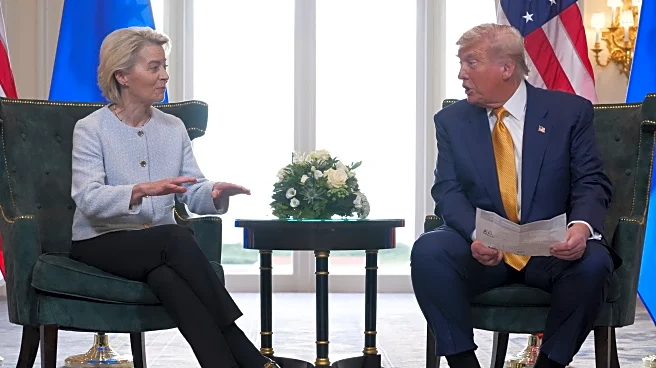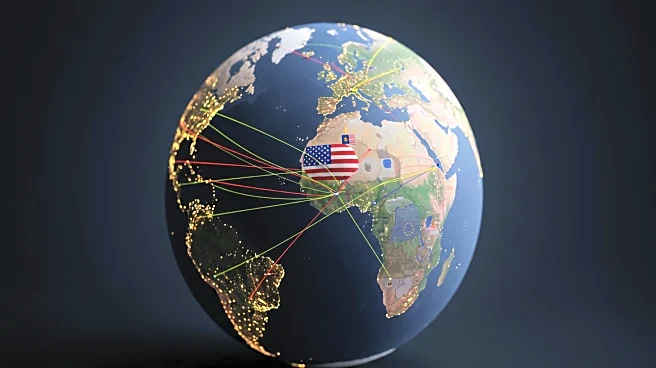What's Happening?
The anticipated reduction in U.S. import tariffs on European cars, from 27.5% to 15%, is currently on hold. This change is part of a broader EU-US trade agreement, which stipulates that the lower tariff rate will only be implemented once the European Union introduces legislative proposals to reduce its own tariffs on U.S. goods. The Trump administration had previously announced tariffs of at least 25% on imported vehicles and parts earlier this year. While the U.S. has reached trade agreements with several countries exporting cars to the United States, Mexico and Canada remain exceptions. The delay in tariff reduction is causing concern among American businesses that import goods, as they face increased costs, which may eventually lead to higher consumer prices.
Why It's Important?
The delay in implementing lower tariffs on European autos has significant implications for the U.S. automotive industry and consumers. U.S. automakers have expressed concerns about maintaining higher tariffs on imports from Canada and Mexico, as previous trade deals allowed for seamless movement of parts and vehicles across North American borders. The current tariffs have not yet significantly increased car prices for American buyers, with average prices rising less than 2% since the tariffs took effect. However, automakers are absorbing the higher costs, which could eventually lead to increased vehicle prices, affecting consumer demand. Companies like General Motors, Ford, Stellantis, and Toyota are incurring billions in additional costs due to these tariffs.
What's Next?
The next steps involve the European Union introducing legislative proposals to reduce tariffs on U.S. goods, which would trigger the reduction in U.S. tariffs on European autos. This legislative action is crucial for the trade agreement to take full effect. Meanwhile, U.S. automakers and consumers are closely monitoring the situation, as prolonged delays could lead to increased vehicle prices and reduced demand. The automotive industry may need to adjust its strategies to mitigate the impact of tariffs, potentially influencing production and pricing decisions.













